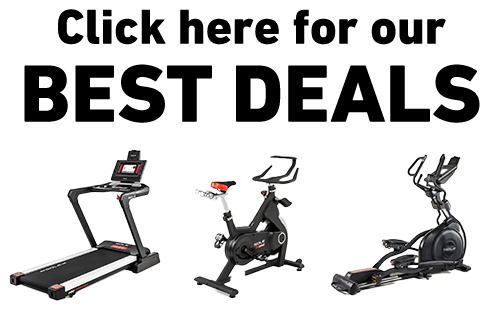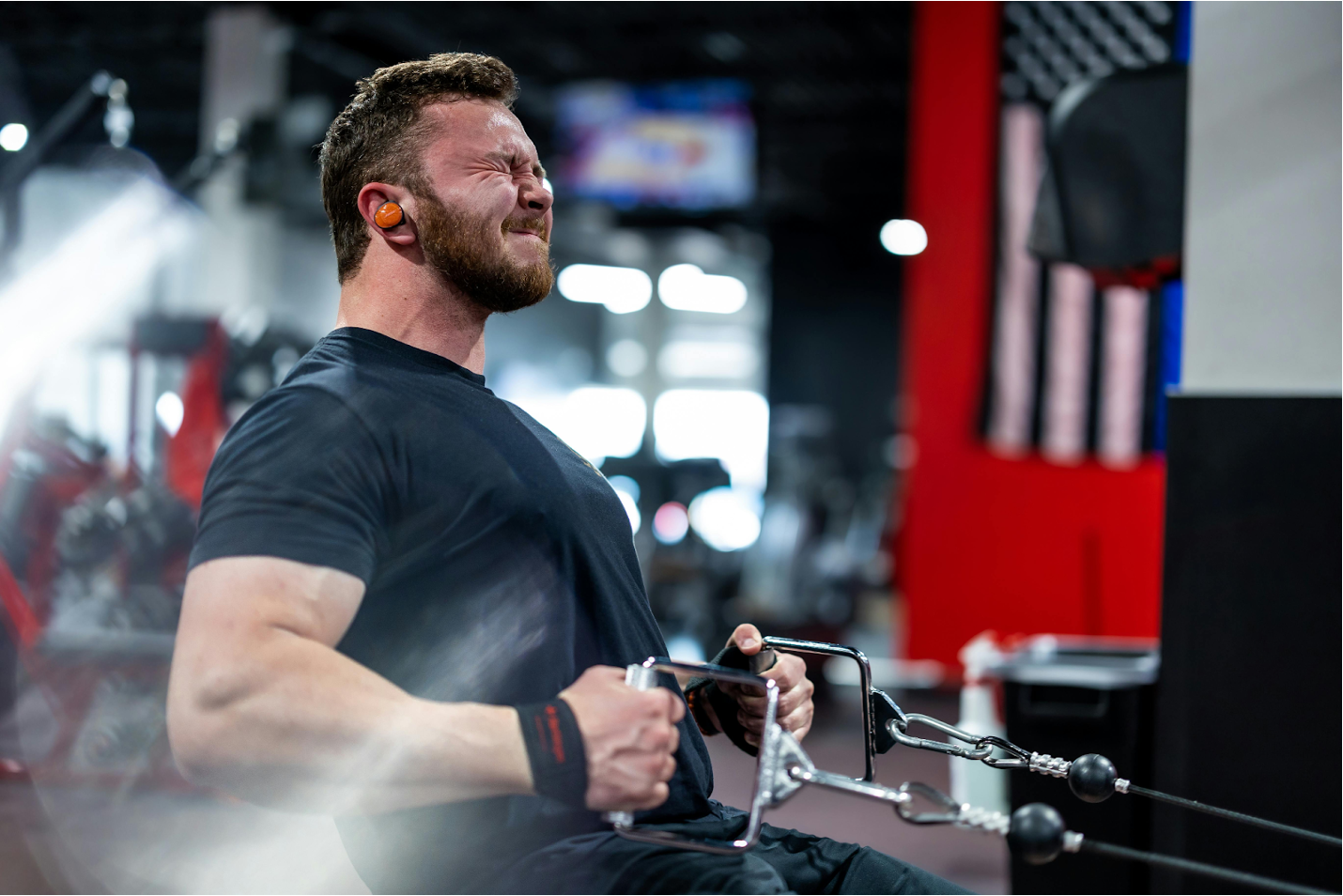Key Takeaways
- The seated cable row targets your lats, rhomboids, traps, and rear delts while engaging biceps and core as secondary movers.
- Proper form is crucial—maintain an upright torso with slight forward lean and pull with your elbows, not your hands.
- Different handle attachments shift muscle emphasis; wide grips focus on outer lats while close grips target middle back and biceps more.
- Alternatives like barbell rows, dumbbell rows, and TRX rows offer similar benefits without a cable machine.
- SOLE’s SRVO trainer and adjustable dumbbells provide all the benefits of seated cable rows while offering greater versatility than traditional cable machines.
Primary Muscles Targeted in the Seated Cable Row
The seated cable row is a back exercise that targets several major muscle groups along the posterior chain. Each rep involves coordinated effort from multiple muscles, with some doing most of the work while others provide support.
Latissimus Dorsi: Your V-Taper Builder
The lats are the largest muscles in your back and the primary movers during seated cable rows. These wing-like muscles run from mid-back to the waist and attach to your upper arms. Well-developed lats create that V-taper physique, making your waist appear smaller and shoulders wider.
During the row, your lats handle shoulder adduction and extension as you pull toward your torso. That deep contraction in your back when pulling the handle? That's your lats working hard. Different grip widths emphasize different lat portions:
- Upper lats: Wide grip attachments
- Middle lats: Medium-width neutral grips
- Lower lats: Close-grip attachments
- Overall development: Vary grip positions across workouts
- Rhomboids: The Posture Perfectors
Between your shoulder blades sit the rhomboid muscles (major and minor). These often-neglected muscles retract your shoulder blades - that squeezing motion during the middle of a cable row.
Strong rhomboids pull your shoulders back and down, counteracting forward shoulder roll from sitting, smartphones, and computers.
Middle & Lower Trapezius
While upper traps get attention (sometimes too much from shrugs), the middle and lower portions are critical for balanced shoulders and aesthetics. During seated rows, these fibers work with rhomboids to retract shoulder blades.
Middle traps run horizontally across your upper back. Lower traps extend downward toward mid-back. Together with rhomboids, these muscles create that desirable "shelf" across the upper back when developed. Focus on squeezing shoulder blades at peak contraction to maximize activation.
Pro Tip: To really feel middle and lower traps working, imagine squeezing an orange between your shoulder blades at the end of each rep. Hold briefly before controlling the weight back.
Posterior Deltoids
Often overshadowed by front delts, posterior deltoids are crucial for balanced shoulder development and healthy function. These muscles sit on the back of shoulders and work with back muscles during pulling movements.
During seated rows, rear delts assist horizontal pulling, especially as elbows travel behind your torso. Developing these improves shoulder appearance from all angles and prevents rounded-shoulder posture that leads to impingement and pain.
|
At SOLE, we're proud to offer the best exercise equipment for your home or gym. Our machines are built to meet the highest quality and performance standards, making them perfect for fitness enthusiasts at any level. SOLE Products
|
Secondary Muscles Engaged
While back muscles get most glory during seated rows, several other groups play vital supporting roles. These secondary muscles ensure stability, proper form, and movement efficiency.
Biceps & Forearm Flexors
Your biceps and forearm flexors act as secondary movers. As you pull toward your torso, these muscles flex elbows and maintain grip. Closer grips mean more biceps contribution.
This explains why many feel significant biceps pump after high-volume rowing. While normal, if you feel biceps more than back, you might be initiating with arms rather than back muscles.
Core Stabilizers
A strong, engaged core is essential for proper execution. Your abs, obliques, and transverse abdominis work to stabilize spine and prevent excessive arching or rounding. This creates a solid foundation for maximum force generation.
With proper bracing, seated rows become excellent for developing functional core strength that transfers to daily activities and other exercises. The anti-flexion stability mimics core control needed in sports and daily movements.
Erector Spinae
Running along your spine, erector spinae muscles maintain a natural spine curve during rows. They work to prevent lower back rounding when reaching forward and resist weight pull at end position.
Strong erector spinae protect your spine during loaded movements and maintain good posture. While not primary movers, these muscles receive significant stabilization training contributing to overall back health.
Perfect Your Seated Cable Row Form
Mastering proper technique maximizes muscle activation and prevents injury.
Proper Setup & Starting Position
Sit on the bench with feet firmly on footplates, knees slightly bent. Reach forward to grasp the handle while maintaining flat back—hinge at hips rather than rounding spine. Keep the torso upright or with slight forward lean (10–15 degrees from vertical), never hunched.
Engage core before beginning, creating "360-degree bracing." This means activating all midsection muscles as if preparing for a punch. This stabilizes the spine throughout movement and prevents energy leakage.
The Pull: Execution Techniques
Start by driving elbows back, not pulling with your hands. Think of hands as hooks while back muscles do actual work. Pull handle toward lower abdomen (around navel or slightly below), keeping elbows close to body.
At full contraction, shoulder blades squeeze together with the chest slightly lifted. Hold peak contraction briefly to maximize activation before slowly returning with control. The lowering phase should take about twice as long as the pulling phase for optimal development.
Common Form Mistakes to Avoid
Even experienced lifters make form errors. Excessive momentum (using body rocking rather than pure muscle contraction) is the most common form mistake. This reduces activation and increases injury risk. Stay controlled, selecting weight that allows proper form.
Another frequent error is arm pulling instead of back initiation. If biceps fatigue before back, you're likely starting incorrectly. Focus on driving elbows backward first. This mental cue shifts emphasis to the posterior chain where it belongs.
For maximum development, fully extend arms forward (maintaining straight back) at start and pull until handle touches or nearly touches abdomen.
Breathing Pattern for Maximum Power
Proper breathing enhances performance and safety. Exhale during the pulling phase when muscles contract. Inhale during the controlled return to starting position. This pattern maintains intra-abdominal pressure for spine support while ensuring oxygen delivery to working muscles.
Top 7 Seated Cable Row Alternatives
1. Bent-Over Barbell Row
The classic barbell row builds serious back mass and strength. Hinge at hips, maintain flat back, and row bar to lower chest. This compound movement allows heavy loading but requires good hip mobility and lower back strength. Start light to master form before adding weight.
2. Dumbbell Rows
Dumbbell rows offer unilateral training and multiple setup options. Single-arm dumbbell rows with knee on bench provide back support. Chest-supported dumbbell rows eliminate lower back stress entirely. Both variations allow natural movement patterns and deep muscle stretches.
3. T-Bar Row
T-bar rows split the difference between barbell rows and machine work. The semi-fixed bar path provides stability while still requiring core engagement. Most gyms have dedicated T-bar stations, or you can create one using a barbell in a corner with a V-handle attachment.
4. Inverted Row
Using just bodyweight and a bar, inverted rows build impressive back strength. Adjust the difficulty by changing body angle; more horizontal means harder. This exercise translates well to pull-up strength while being easier on joints than heavy loaded movements.
5. Resistance Band Rows
Bands provide accommodating resistance that increases through range of motion. Anchor band at seated height and perform rowing motion. Great for home workouts, travel, or high-rep finishers. Bands also allow easy angle adjustments for targeting different muscles.
6. TRX Suspension Rows
TRX rows offer incredible versatility with added core challenge. Adjust body angle to control difficulty. The instability forces stabilizers to work overtime, creating functional strength that transfers to sports and daily activities. Perfect for all fitness levels.
7. Machine Row
Machine rows provide guided motion perfect for beginners or injury rehab. Chest-supported row machines remove lower back stress while effectively targeting lats, rhomboids, and traps. While lacking free-weight stabilization demands, machines allow pure focus on target muscles, which is ideal for high-volume training or finishers.
Build a Powerful Back at Home with SOLE's Versatile Equipment
No cable machine? No problem. SOLE's equipment lineup gives you everything needed to perform the seated cable row alternatives that build serious back strength.
The SOLE’s SRVO All-in-One Trainer is a game-changer here; its motorized resistance system creates that smooth, consistent tension you love from cable machines, perfect for seated rows with various grip positions. Unlike traditional cables, the SRVO's resistance patterns can be programmed to increase through the range of motion, maximizing lat activation.
For those who prefer free weight alternatives, the SW180 Adjustable Dumbbells excel at single-arm and chest-supported rows. With weights from 5–80 pounds, you can start light to perfect form, then progressively overload as your back strength improves. Pair them with the SW116 Weight Bench for supported dumbbell rows that eliminate lower back stress while hammering those lats and rhomboids.
The SOLE+ App guides you through proper form for each seated cable row variation, ensuring you target the right muscles without risking injury.
Ready to build that V-taper without a gym membership? Check out the SOLE equipment collection today!
Frequently Asked Questions (FAQ)
How often should I include seated cable rows in my workout routine?
For optimal back development, include seated rows 2 to 3 times weekly with at least 48 hours between sessions. This balances growth stimulus with recovery. Beginners start twice weekly.
Advanced lifters might benefit from three sessions with varied grips and rep ranges. Remember back muscles work as stabilizers in many exercises, so monitor total volume to prevent overtraining.
Can seated cable rows help improve my posture?
Absolutely. Seated rows directly strengthen rhomboids, middle traps, and rear delts; the muscles pulling shoulders into proper alignment.
These often become lengthened and weak from sitting, computer work, and phones, creating rounded shoulders.
How can I increase the intensity of seated cable rows without adding weight?
Time under tension techniques work great. Slow the lowering phase to 3 to 4 seconds per rep. This increases fiber recruitment and metabolic stress without changing load. Effective for breaking plateaus while reducing joint stress.
Rest-pause training offers another method. After near-failure, rest 15 to 20 seconds and perform more reps with the same weight. Repeat 2 to 3 times to extend the set beyond normal capacity.
Mechanical drop sets also boost intensity. After failure with challenging grip (wide), immediately switch to a stronger position (close) and continue with the same weight. This extends the set, creating substantial stress and tension.
Can the SOLE SRVO really replace cable rows for back development?
Absolutely! The SOLE SRVO actually offers some advantages over traditional cable machines for back training. Here's why: the SRVO's dual-motor system creates incredibly smooth resistance that mimics cables, but you can program different resistance curves.
Want it to get harder at the peak contraction like bands? Done. Prefer consistent tension like cables? No problem. This adaptability means you can target your back muscles in ways standard cable machines can't.
For seated rows specifically, the SRVO lets you adjust the resistance angle and handle position to hit different parts of your back. Wide grip for outer lats? Close grip for middle back? The SRVO handles it all.
Plus, you're not limited to just rowing motions, you can do lat pulldowns, face pulls, and straight-arm pulldowns all on the same machine.




Leave a comment
This site is protected by hCaptcha and the hCaptcha Privacy Policy and Terms of Service apply.